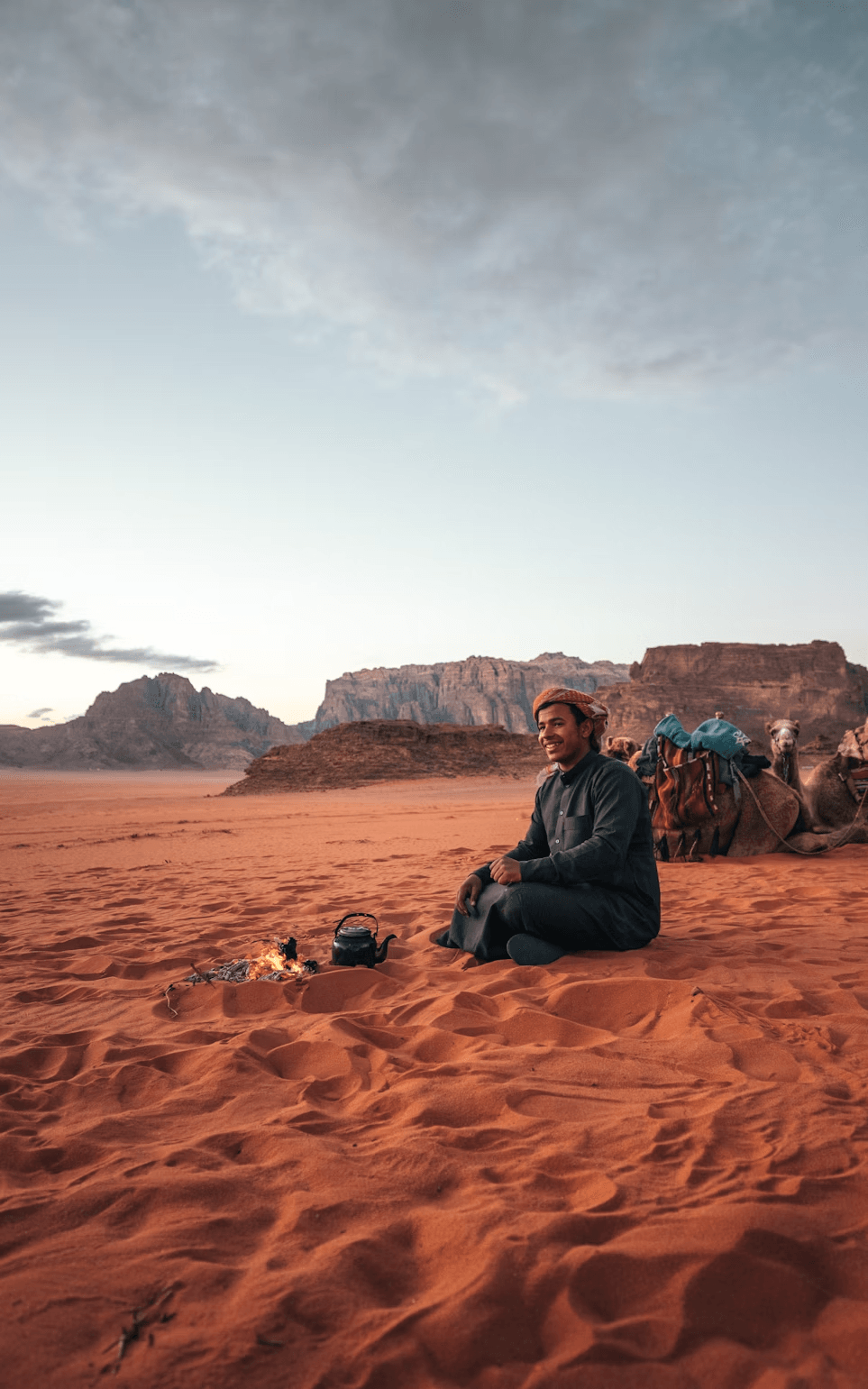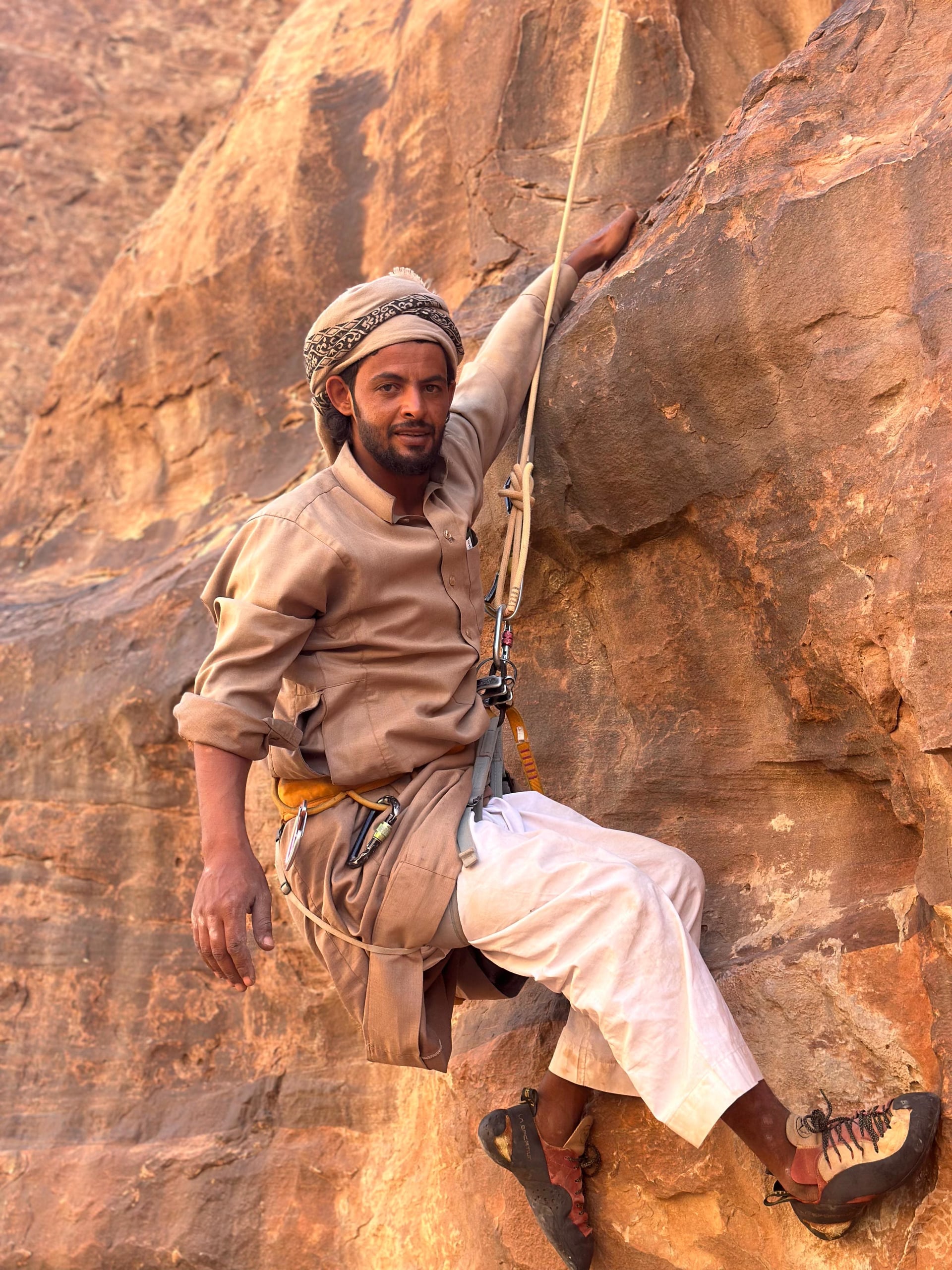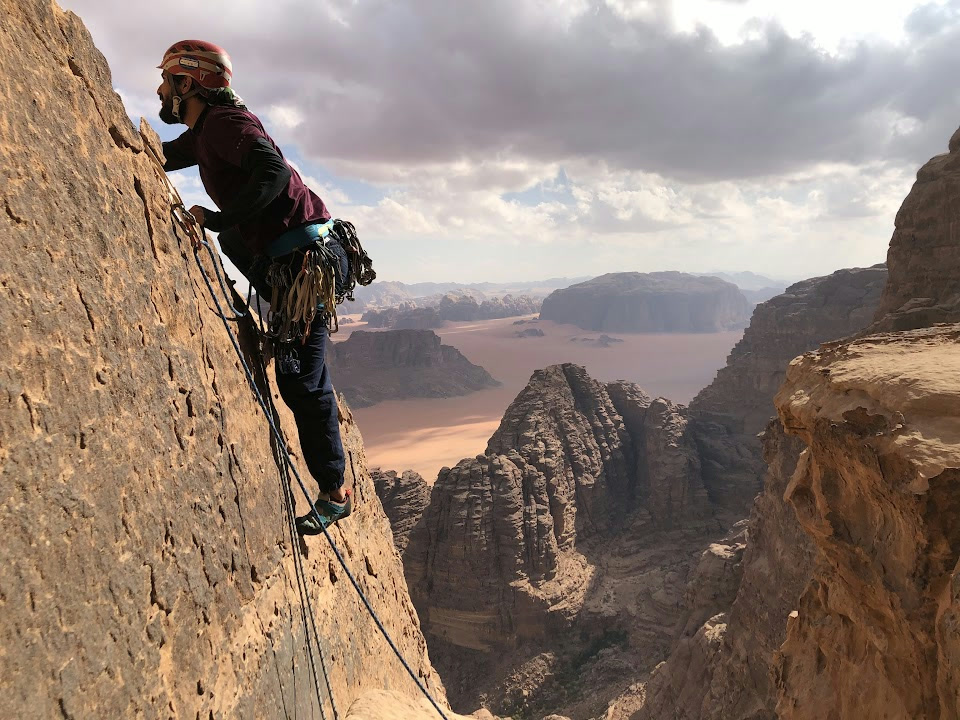Long before modern climbers arrived in Wadi Rum with ropes and carabiners, my ancestors-the Bedouin people-were already ascending these magnificent mountains. For countless generations, we have climbed these peaks during hunting expeditions, to collect medicinal plants, and to reach vantage points for watching over our herds.
The Bedouin Way
Traditional Bedouin climbing was done barefoot or in simple sandals. Without modern equipment, our people developed an intimate knowledge of the rock, learning to read the stone's texture, identify solid holds, and find the safest paths through seemingly impossible terrain. This wasn't sport-it was necessity, survival, and deep connection to the land.
The routes we created followed natural weaknesses in the rock: cracks, ledges, and chimney systems. We built small cairns-what we call "Bedouin steps"-to mark difficult passages. In some places, you can still find small carved handholds that were chiseled generations ago to help climbers pass particularly challenging sections.
"Most of the peaks in the region have in fact been climbed by the Bedouin, often by more than one route, during hunting expeditions or whilst collecting edible or medicinal plants and herbs. Although originally climbed and reversed solo in barefeet and without any equipment, some of these routes are quite serious undertakings with complex route finding. The Bedouin are proud of them and rightly so!"
- Tony Howard, Treks and Climbs in Wadi Rum Jordan

Famous Bedouin Routes
Sheikh Hamdan's Route
Perhaps the most famous Bedouin route is Sheikh Hamdan's Route on Jebel Rum. Sheikh Hamdan Amad, who had guided survey parties to the summit during early mapping expeditions, led the first recorded Western ascent in 1952 with Charmian Longstaff and Sylvia Branford. This route, which takes the shaded north-facing wall of the Great Siq, remains a classic climb today.
Hammad's Route
Named after Hammad, the son of Sheikh Hamdan, this route offers another classic way to the summit of Jebel Rum. The family tradition of mountain knowledge passed from father to son continues to this day among Wadi Rum's Bedouin guides.
Sabbah's Route (Jebel Khazali)
This traditional route ascends Jebel Khazali through the stunning Khazali Canyon, passing ancient Nabataean inscriptions before climbing steep sandstone steps and exposed ridges to reach a summit with views that many say surpass even those from Jebel Rum.
Traditional Techniques
Bedouin climbing techniques were developed specifically for Wadi Rum's unique sandstone. Here are some traditional methods still used today:
- • Reading the Rock: Different colors indicate different rock quality. Dark red and black usually mean solid rock, while yellow and pink can be softer and more fragile.
- • Using Natural Features: Tafoni (honeycomb weathering), natural pockets, and horizontal ledges created by the rock's stratification provide natural holds and rest spots.
- • Chimney Techniques: Many routes follow natural chimney systems where climbers can use opposing pressure between walls.
- • Route Finding: Following cairns and reading the natural line of weakness in the rock face, often requiring circuitous paths to avoid major obstacles.
Modern Bedouin Guides
Today, Bedouin guides like myself combine this ancestral knowledge with modern safety equipment and international certifications. We're trained in rope work, first aid, and rescue techniques, but we still carry the traditional knowledge passed down through generations.
When I guide climbers on these traditional routes, I'm not just showing them a path up a mountain-I'm sharing centuries of Bedouin connection to this land. Every hold, every ledge, every cairn has a story. This is what makes climbing in Wadi Rum special: you're not just climbing rock, you're following in the footsteps of generations of desert people who called these mountains home.
Experience Bedouin Climbing Traditions
Join us for a climb on one of these historic Bedouin routes. You'll learn traditional techniques, hear stories passed down through generations, and experience Wadi Rum the way my ancestors did-with respect, skill, and deep connection to the desert.
Book a Traditional RoutePreserving the Heritage
As modern climbing grows in Wadi Rum, it's important to preserve these traditional routes and the knowledge they represent. We ask climbers to respect the cairns, avoid adding unnecessary fixed protection to Bedouin routes, and take time to understand the history and culture behind these climbs.
The spirit of Bedouin climbing is pure adventure-reading the rock, finding the way, and trusting in your skills and knowledge. This is the heritage we're proud to share with climbers from around the world.
Historical information and quotes sourced from "Treks and Climbs in Wadi Rum, Jordan" by Tony Howard, used with permission. Tony Howard's pioneering work in documenting Wadi Rum's climbing routes has been instrumental in preserving both the climbing history and Bedouin traditions of this region.


💬 Join the Discussion
Share your thoughts, experiences, or questions about this article